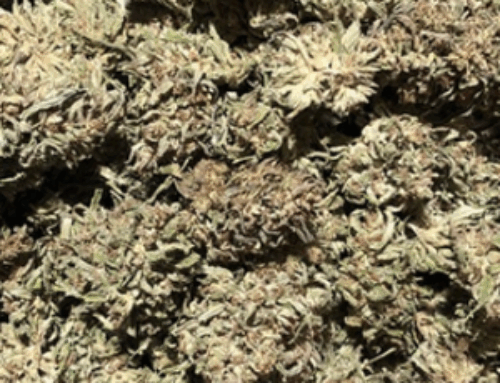Impact of high-potency cannabis rippling through courts, health-care system
June 22, 2025
Matthew Fox says he has two words for customers wanting to try Marvin’s Premium Candy Co. Cherry edibles.
“Good luck.”
Fox works behind the counter at the Realeaf Cannabis trailer on Highway 11, just north of Saskatoon. The business is owned by the Saulteaux First Nation.
Under the federal Cannabis Act, retailers selling edible cannabis gummies in urban centres like Saskatoon and Regina have a limit of 10 mg THC per package. However, this cap is not typically enforced in stores owned and operated by First Nations. On its website, Realeaf says its cannabis stores are an expression of sovereignty.
“Several Indigenous communities have established their own cannabis regulations based on their inherent right to self-governance,” it said.
The Realeaf trailer offers a variety of colourfully-packaged edible products in its glass display case: Buddha Boys, Mellow Vibes, 420 Not For Amateurs, Choice Edibles.
Then there are Marvin’s cherry-flavoured edibles. Fox says his co-worker calls this the ‘talking to God’ section of the store. For just under $100, Marvin’s edibles pack 8,000 mg of THC into four candies. That’s 2,000 mg of THC in each gummy — 200 times stronger than the federal standard.
Fox has worked at the trailer for just over two years. An experienced cannabis consumer, he said he’s tried the higher end products.
“The most I’ve taken was 1,500 milligrams. I was high for three days,” he said.
“I didn’t want to leave my house, I just stayed home and gamed out. Ate a lot food those three days.”

So what happens to the brain when someone ingests that level of THC? Health researchers are actively considering that question.
“Just because something’s legal doesn’t mean it’s safe, ” University of Saskatchewan neuroscientist John Howland said.
“I definitely think we need a huge increase in messaging around the dangers of cannabis and the dangers of frequent use, and also high-potency use.”
This is not an abstract concern in Saskatchewan.
The Saskatchewan Health Authority reports that the number of visits to hospital emergency departments across the province by people with cannabis-related psychosis has been increasing year to year, from 116 people in 2022 to 152 in 2023 to 165 in 2024.
Cannabis and the courts
Shabehram Lohrasbe is a forensic psychiatrist based in Victoria with four decades of experience assessing people accused of violent crimes.
In May, he testified at the Saskatoon murder trial of Thomas Hamp. Lohrasbe had been hired by the defence to prepare an assessment on Hamp who, three years ago, fatally stabbed his partner, Emily Sanche.
Lohrasbe concluded Hamp was “was acutely and severely psychotic” when he stabbed Sanche. He diagnosed him with schizophrenic spectrum disorder, obsessive compulsive disorder (OCD) and cannabis use disorder.
“It is likely that his capacity to ‘know’ that his actions were wrong, in the real world, was severely impaired,” he said.
The Crown suggested that Hamp was in a drug-induced psychosis when he killed Sanche. Lohrasbe acknowledged that a drug-induced psychosis from cannabis could look like mental illness.
“There is the possibility this is all the result of cannabis, but we won’t know.”
The judge will rule in July on whether Hamp is not criminally responsible.
After testifying, Lohrasbe expanded on the evolving perceptions of cannabis in an interview with CBC. The potency of today’s cannabis is a far cry from the “hippie pot” he encountered when he began his career, he said.
Although there were always “boutique products” like hashish and oils, much of the dried flower cannabis had THC levels in the low single-digit range. Today, by comparison, cannabis retailers sell flower products in the 25 to 30 per cent THC level. And that’s without factoring in distillates and edibles that go even higher.
“I for one, and from all the collagues that I spoke to, really didn’t expect cannabis to be taking the role that it did, or has now,” he said.
“We really didn’t see cannabis as a particularly important drug of abuse in the sense that, you know, it’s been around forever and people have used it both by smoking and eating. And compared to some of these other drugs (PCP, methampetamine, cocaine) it was not really thought to be particularly toxic.
“What we didn’t anticipate was the association of cannabis with subsequent psychotic syndromes.”
The wild card in a critical system
Assessing the impact of cannabis on the human mind is an ongoing area of public health research for Robert Laprairie and John Howland, professors at the University of Saskatchewan.
“The exciting and scary parts of doing cannabis research is there are far more unknowns than there are knowns,” said Laprairie, an associate professor who does cannabis research in a molecular pharmacology laboratory.

He said the post-legalization stakes are high, especially since many of the people consuming the high-potency cannabis are in their teens and early 20s.
“It’s a fair thing to say that we’re introducing a wild card that has effects on a critical system that’s required for the brain to grow and mature in a normal way.”
Howland, an associate professor who runs a behavioural neuroscience laboratory, said the orders-of-magnitude increases in the potency of cannabis must be respected. He compared retail cannabis today to the “hippie pot” described by Lohrasbe.
“So it’s triple the potency, sort of in one or two generations of people consuming them. So that’s a huge difference obviously in dose, and that applies to any drug that you would consume,” he said.
“If you drink a five per cent beer and you start drinking a 15 per cent beer, it’s a pretty big difference in terms of the intoxicating properties of that drug.”

Both researchers say that a user’s age, the frequency of use, the THC levels and their family history all come into play.
Both also say it’s critical to continue public research into the impacts — Howland, for example, is currently looking at how cannabis affects the fetus in animals — and to continue to work with Health Canada.
“I don’t think we adequately predicted the rise of these high THC distillate products, as an example,” Laprairie said.
“So the conversation has to be ongoing.… This has to be an evolving thing.”
Search
RECENT PRESS RELEASES
Related Post



